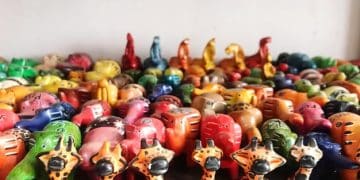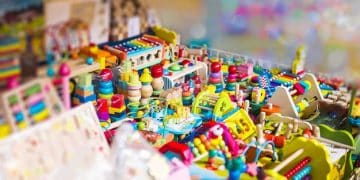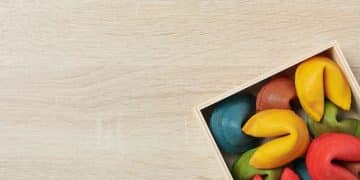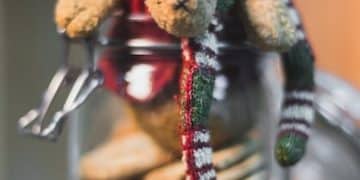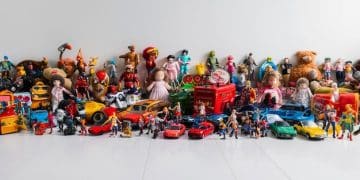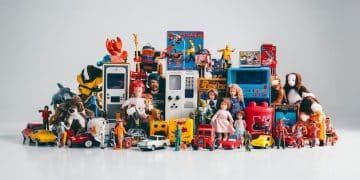How 3D Printing Is Transforming the US Toy Industry
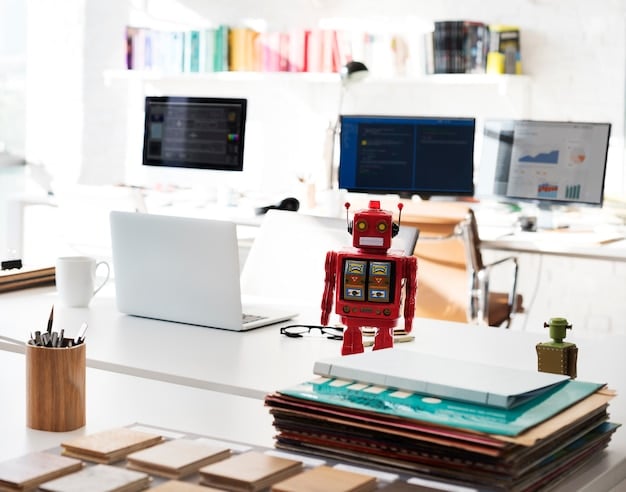
3D printing is revolutionizing the US toy industry by enabling faster prototyping, mass customization, and on-demand manufacturing, leading to innovative designs and personalized products that cater to evolving consumer demands.
How 3D Printing Is Revolutionizing the Toy Industry in the US
The toy industry in the US is undergoing a significant transformation, and 3D printing is revolutionizing the toy industry in the US by changing how toys are designed, manufactured, and distributed. This technology offers unprecedented opportunities for innovation and customization.
The Rise of 3D-Printed Toys
3D printing, also known as additive manufacturing, has moved from industrial applications to consumer spaces. Its adoption in the toy industry allows for greater flexibility and creativity in producing toys.
The integration of 3D printing into the toy industry has several key drivers. One of the main factors is the reduction in production lead times.
Rapid Prototyping
3D printing drastically cuts down the time required to create prototypes. Designers can bring their ideas to life in a matter of hours, allowing for quicker iterations and improvements based on physical models.
Customization and Personalization
A significant advantage of 3D printing is the ability to create customized toys. This level of personalization was previously too costly and time-consuming with traditional manufacturing methods.
Toys can now be designed to reflect individual preferences, such as specific colors, names, or physical features, enhancing the emotional connection between the child and the toy.
- Increased Design Freedom: Designers are no longer constrained by the limitations of traditional manufacturing processes.
- Cost-Effective Small Runs: 3D printing makes it economical to produce small batches of toys, catering to niche markets or limited edition products.
- Enhanced Creativity: The ability to experiment and innovate new designs without large upfront investments has sparked a new wave of creativity.
The convergence of these factors has led to an increase in the number of 3D-printed toys available to consumers.
Benefits for Small Businesses and Independent Designers
3D printing is not just beneficial for large corporations; it also provides substantial opportunities for small businesses and independent designers. This technology levels the playing field, allowing smaller entities to compete with larger, more established companies.
The accessibility of 3D printing means that startups can launch new toy lines without the large capital investments typically required for tooling and production.
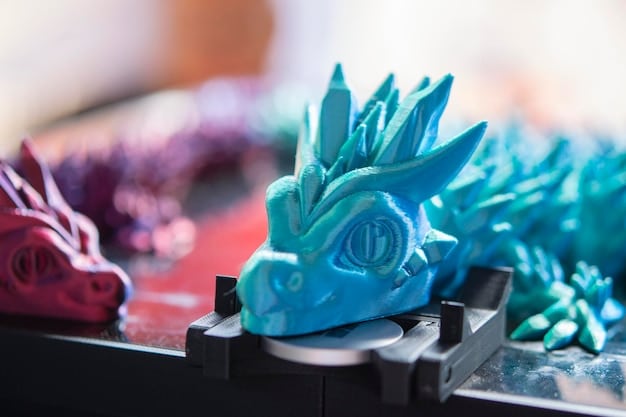
Reduced Startup Costs
The primary benefit for small businesses is the significant reduction in startup costs. Traditional manufacturing often requires substantial investments in molds, dies, and machinery.
Direct-to-Consumer Sales
3D printing enables businesses to produce toys on demand, thus reducing inventory costs and associated risks. Toys can be sold directly to consumers through online platforms, further streamlining the distribution process.
- Lower Inventory: Produces toys only when there’s an order, eliminating the need for large storage spaces.
- Reduced Waste: Print-on-demand reduces excess production and waste, further cutting costs.
- Faster Market Entry: Enables faster launch of new products without undergoing lengthy manufacturing processes.
With these advantages, small businesses can explore new markets, experiment with innovative designs, and respond quickly to consumer feedback, gaining a competitive edge in the toy market.
The Impact on Toy Design and Innovation
3D printing enables designers to push the boundaries of toy design, creating unique and innovative products that were previously unimaginable with traditional manufacturing methods.
The ability to rapidly prototype and test new ideas accelerates the design process, allowing for continuous enhancements based on user feedback and market trends.
Complex Designs and Intricate Details
3D printing can produce complex geometries and intricate details with precision. This capability allows designers to create toys with elaborate structures, moving parts, and textures that would be challenging or impossible to achieve with traditional techniques.
Material Experimentation
3D printing also enables experimentation with different materials. Designers can explore the use of various plastics, resins, and even composite materials to enhance the durability, functionality, and aesthetic appeal of toys.
- Eco-Friendly Materials: Allows for the use of biodegradable and recyclable materials, catering to environmentally conscious consumers.
- Lightweight Designs: Enables creating lightweight but sturdy designs that enhance playability.
- Durable Toys: Allows the use of materials that withstand rough handling, making toys last longer.
This level of material flexibility not only enhances the quality and safety of toys but also opens up new avenues for creativity and innovation in toy design.
Challenges and Limitations
Despite its numerous advantages, 3D printing in the toy industry is not without its challenges and limitations. Addressing these issues is essential for the technology to achieve its full potential in transforming the market.
One of the primary limitations is the scale of production. While 3D printing is ideal for prototyping, small-batch manufacturing, and customized toys, it is not yet cost-effective for mass production.
Material Constraints
The range of materials available for 3D printing is still limited compared to traditional manufacturing processes. This limitation can restrict the types of toys that can be produced and their overall durability and functionality.
Accuracy and Surface Finish
While 3D printing can produce intricate designs, achieving high levels of accuracy and a smooth surface finish can be challenging. Additional post-processing steps may be required to refine the final product, adding to the overall production time and cost.
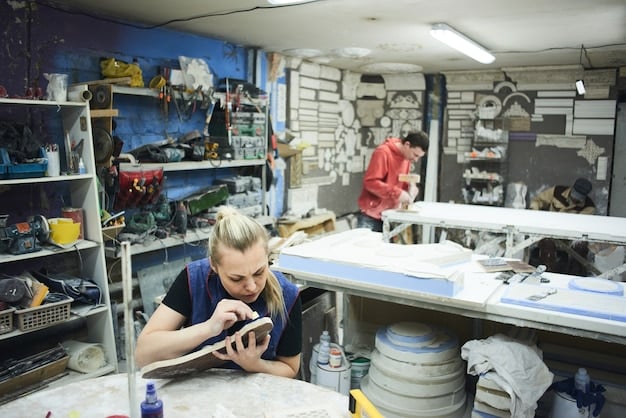
- Production Speed: 3D printing can be relatively slow compared to mass production techniques.
- Cost per Unit: The cost per unit can be higher for large quantities, especially when additional materials or post-processing are needed.
- Skill Requirements: Operating and maintaining 3D printers, as well as designing 3D models, requires specialized skills and training.
Overcoming these challenges will require ongoing technological advancements and investments in research and development.
The Future of 3D Printing in Toys
The future of 3D printing in the toy industry appears promising, with continued advancements expected to address current limitations and expand its application.
As technology improves, it is anticipated that 3D printing will become more cost-effective and efficient, enabling the production of larger quantities of toys at competitive prices.
Advancements in Materials
Ongoing research into new materials will broaden the range of options available for 3D printing. This will lead to the development of toys that are more durable, sustainable, and functional.
Integration with AI and Customization
Integrating AI can further enhance the customization process. AI algorithms can analyze consumer data and preferences to generate personalized toy designs automatically, creating unique and engaging play experiences.
- Sustainable Practices: Greater usage of eco-friendly materials aligns with global sustainability goals.
- Interactive Toys: Integration of electronics and smart technologies.
- On-Demand Production: Ability to manufacture toys closer to the point of sale, reducing transportation costs and carbon footprint.
With these advancements, 3D printing is poised to play an increasingly significant role in shaping the future of the toy industry, offering endless opportunities for innovation and creativity.
Examples of 3D Printing Successes in the Toy Industry
Several companies and designers have already successfully integrated 3D printing into their toy manufacturing processes, providing tangible examples of its benefits and potential. These early adopters have demonstrated the technology’s viability and inspired others to explore its capabilities.
One notable example is the creation of personalized action figures. Companies are allowing customers to upload photos and customize the features of their action figures, which are then 3D-printed to order.
Customizable Dolls
Another application is the production of customizable dolls. Customers can choose the doll’s skin tone, hair color, clothing, and accessories, resulting in a unique and personalized toy.
Educational Toy Sets
3D printing has also been used to create educational toy sets that promote STEM learning. These sets include building blocks, puzzles, and robotic components, all of which can be 3D-printed on demand.
- Customizable Board Games: Designers are creating board games where players can design and print their playing pieces.
- Articulated Action Figures: 3D printing allows for creating action figures with multiple points of articulation.
- DIY Toy Kits: 3D printing is used to produce parts for build-it-yourself toy kits, encouraging creativity and hands-on learning.
These success stories illustrate the transformative potential of 3D printing in reshaping the toy industry, providing both consumers and manufacturers with innovative and engaging solutions.
| Key Aspect | Brief Description |
|---|---|
| 🚀 Rapid Prototyping | Accelerates the design process, allowing for quicker iterations and improvements. |
| 🎨 Customization Options | Enables personalized toys, enhancing the emotional connection for kids. |
| 🌱 Eco-Friendly Materials | Offers the use of biodegradable and recyclable materials, appealing to eco-conscious consumers. |
| 💼 Small Business Growth | Reduces startup costs and inventory, enabling quicker market entry for smaller companies. |
FAQ Section
▼
3D printing, or additive manufacturing, builds three-dimensional objects layer by layer from a digital design. It uses materials like plastic, resin, or metal, melting or solidifying them to create the final product.
▼
3D printing is revolutionizing toy design and production by enabling rapid prototyping, customization, and on-demand manufacturing. This allows for unique, personalized toys and reduced production times and costs.
▼
3D-printed toys offer benefits like customizable designs, rapid prototyping, lower inventory costs, and the ability to use eco-friendly materials. They also enable greater design complexity and intricate details.
▼
3D-printed toys can be safe if made with non-toxic materials and designed to prevent small parts from detaching. Always check the manufacturer’s safety guidelines and certifications before purchasing.
▼
Small businesses can benefit by reducing startup costs, creating niche products, minimizing inventory, and quickly responding to market demands. This allows for more flexibility and competitiveness with larger companies.
Conclusion
In conclusion, 3D printing is transforming the US toy industry by enabling faster prototyping, mass customization, and innovative designs. Despite the challenges, the benefits for small businesses, designers, and consumers are substantial, paving the way for a dynamic and personalized future in toy manufacturing.
